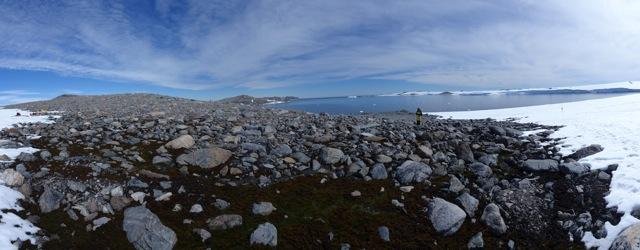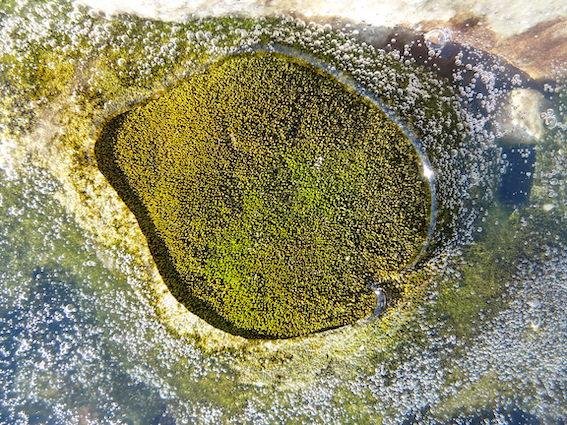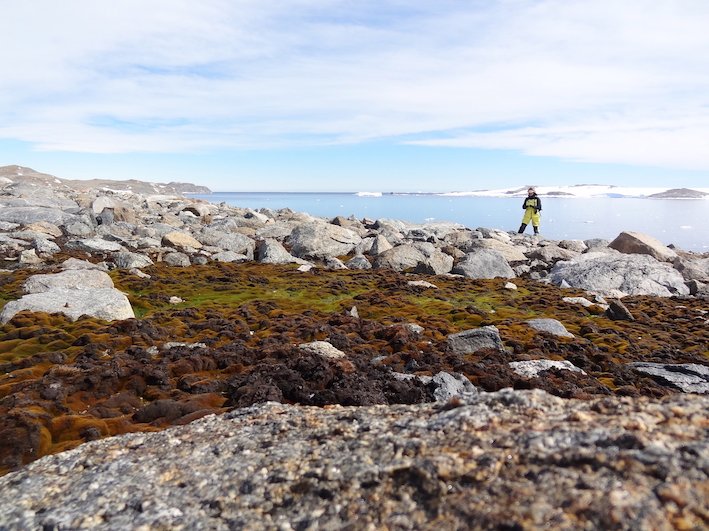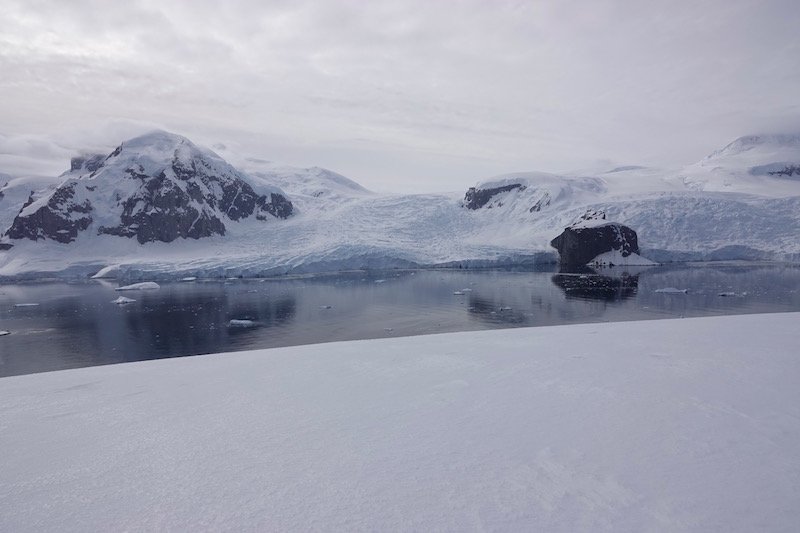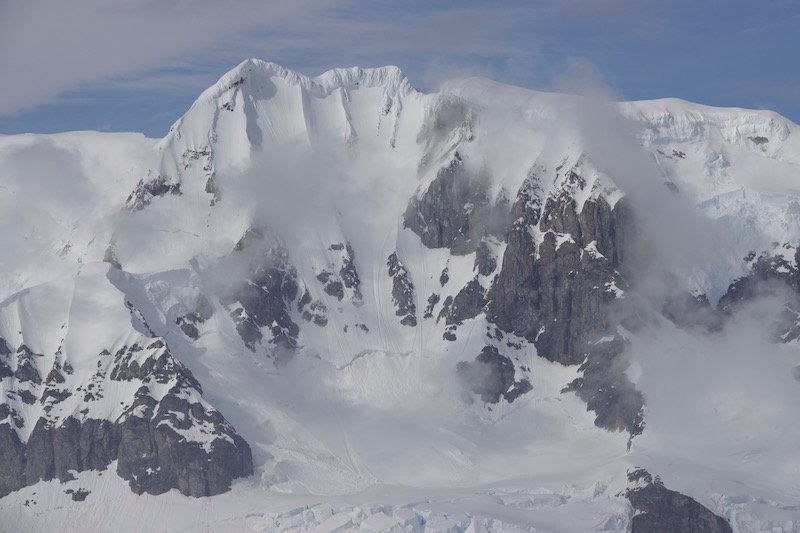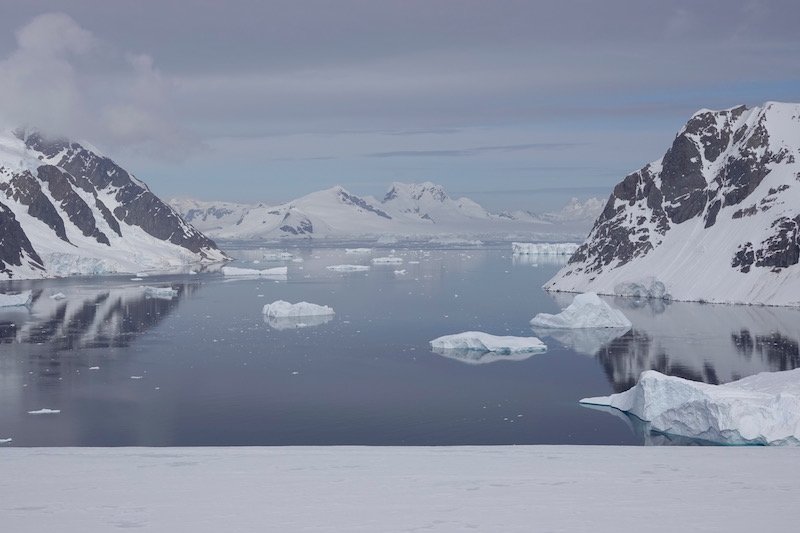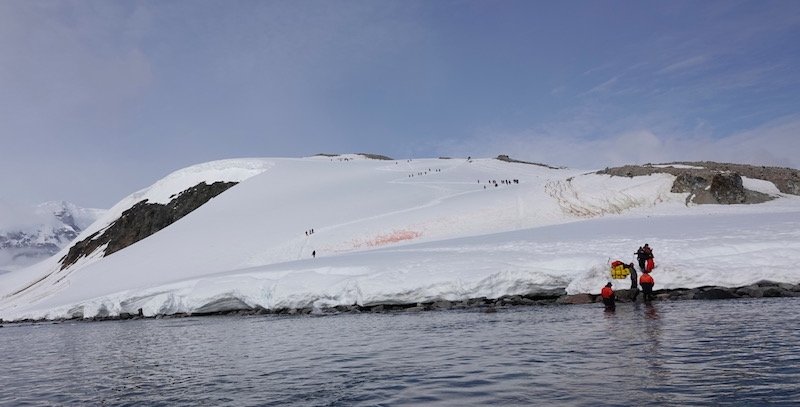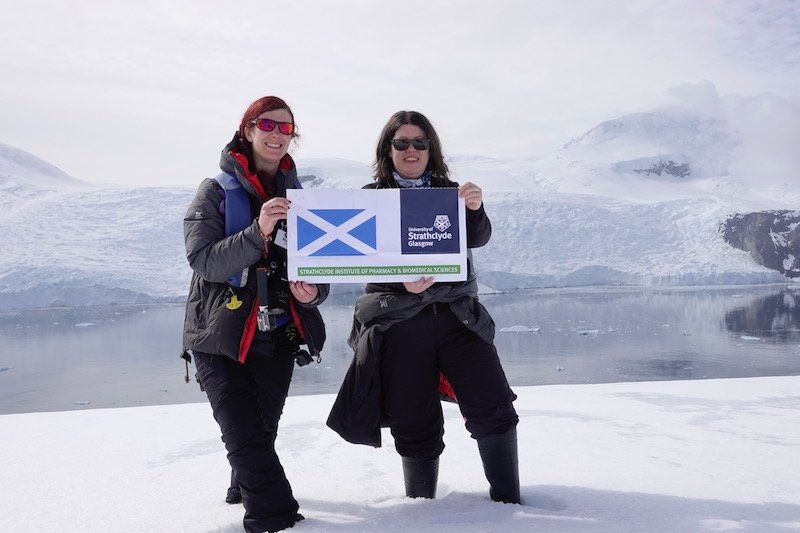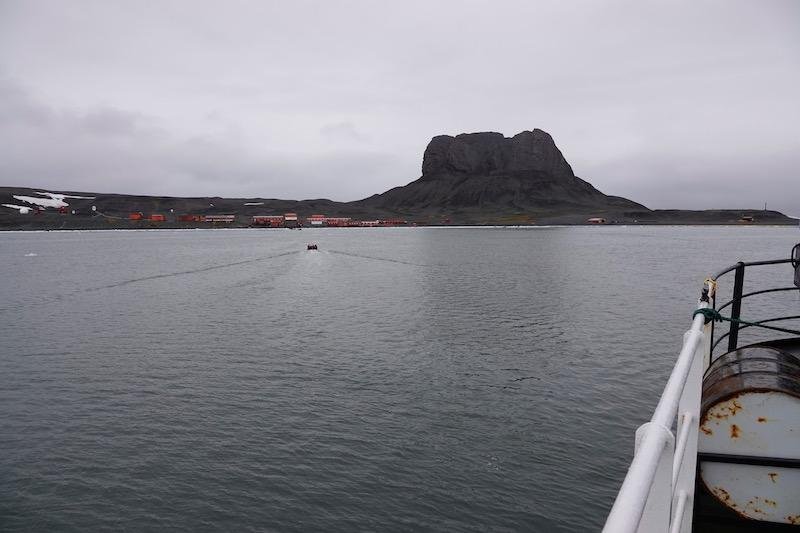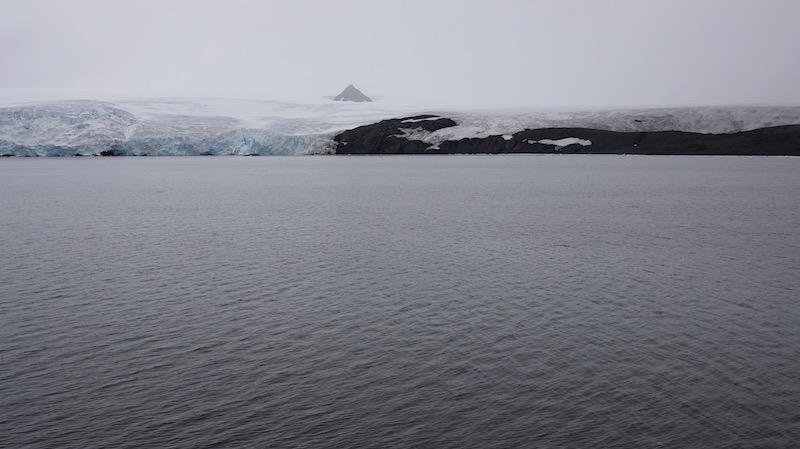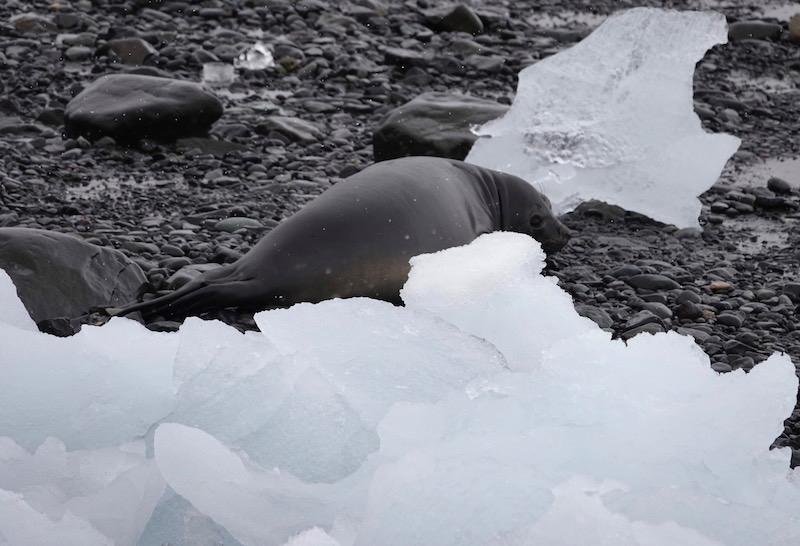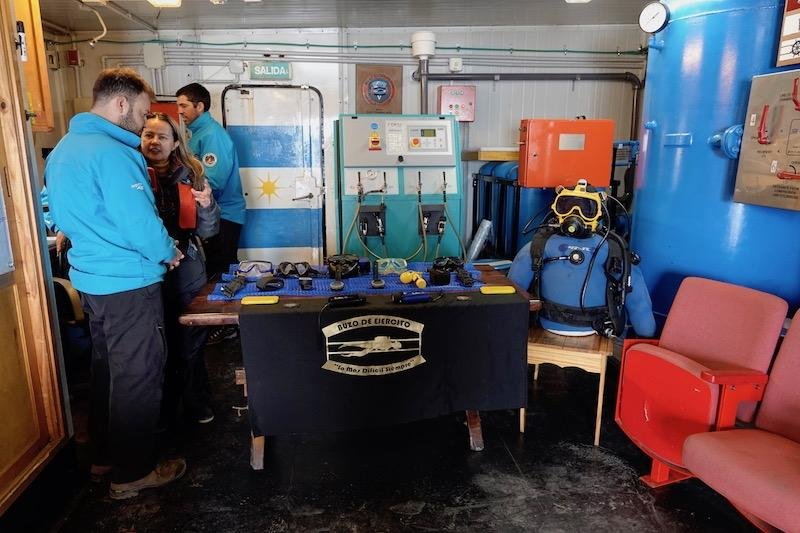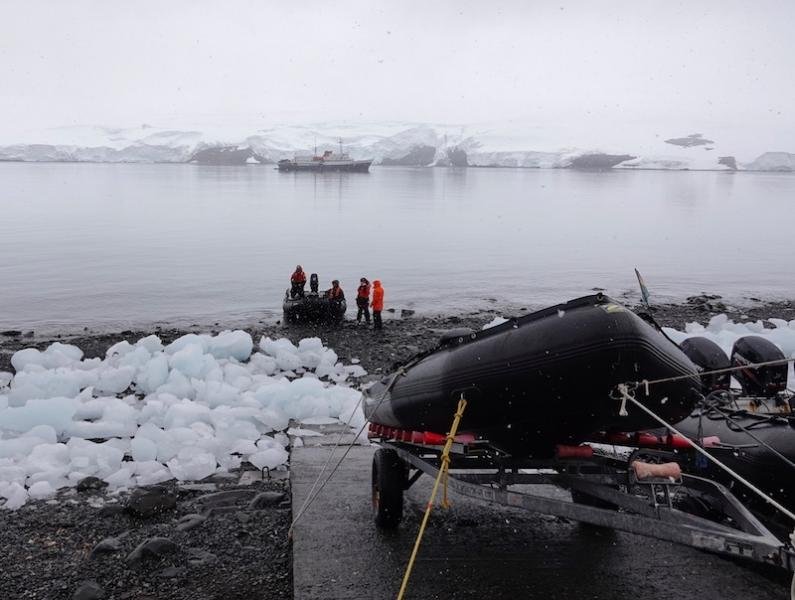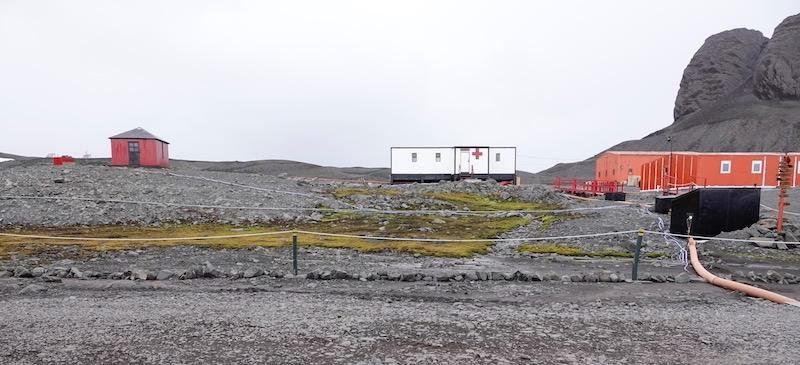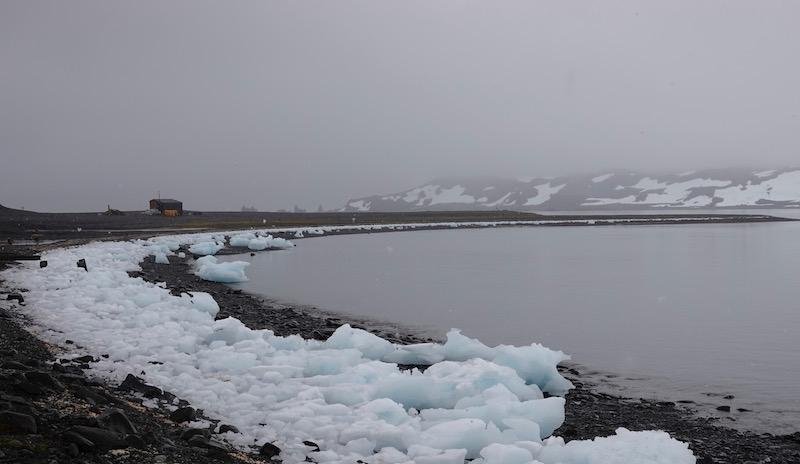Displaying items by tag: Antarctic research
Even in Antarctica - it’s hot in the sun!
We know that Antarctica is the frozen planet and we tend to think that its animals and plants must also be well adapted to cold conditions. As a result we probably assume that they do better in cold conditions than other plants or animals. But is that really true?
Working with mosses, the main plants, in Antarctica I have often wondered this? I know they are amazing at surviving the cold. Try putting your salad vegetables in the freezer and you quickly see that many plants are very bad at tolerating freezing. Some plants are even damaged by chilling temperatures above zero (fridge temperatures). But we can collect Antarctic mosses, dry them and put them in the freezer and then take them out after a few months, or more than 50 years, and they will grow again! So yes, they can tolerate freezing conditions - they put up with about 8 months a year in nearly complete darkness and temperatures as low as -40˚C
But that doesn’t mean they like it cold. Are they just able to tolerate cold but would be more productive if summers were warmer? If so, can they warm themselves up above those usually chilly summer air temperatures of 1-2 40˚C? Are they really in Antarctica because they can survive the cold winters while other plants can’t? In which case its more about lack of competition from flowering plants than actually being truly cold loving.
Monitoring moss beds in Antarctic a 20 year story
Climate change is affecting Antarctica and minimally destructive long-term monitoring of its unique ecosystems is vital to detect biodiversity trends, and to understand how change is affecting these communities. Back in the 1990s when I first visited Antarctic the tradies at Casey would ask “So what is happening to the moss?” given that they knew we were studying it. At the time we didn’t know, because long term monitoring was not something that anyone was interested in funding. But it bugged Dr Jane Wasley & I that we didn’t know the answer. So, when State of the Environment Reporting started, we agreed to try and come up with a monitoring system that would answer the question.
Anatomy of a heatwave: how Antarctica recorded a 20.75°C day last month
In late February there were reports of record-breaking high temperatures from scientists working on the Antarctic Peninsula. At the time Diana King and I were in NSW in Australia having spent the summer experiencing smoke pollution from the Australian bushfires along with extremely hot days. Our colleague Dana Bergstrom was sending us reports of rain at Davis Station in East Antarctica. Given that almost all precipitation falls as snow in Antarctica, these were strange reports. Our Chilean colleagues, Marisol Pizarro Rojas and Gustavo Zúñiga were also reporting that there was no snow around the Escudero research station on King George Island and that every day was perfect for field work, a most a worrying development. There is always bad weather sometime in Antarctica!
Homeward Bound 9 - Danko Island, snow algae and silence
We finally get ashore again on Jan 12th. Danko Island is near Cuverville Island where we landed a few days ago and saw Gentoos. It has a steep hill and a few small penguin rookeries. It’s great to walk up the hill where there is a large plateau and stunning views towards the peninsula. Inspired by Christiana Figueres many of us also have a magical silent time, listening to the whales breaching below and the avalanches and the calving glaciers cracking across the water.
On the way up the hill there is a big patch of red snow algae. Snow algae are singled celled algae similar to the ones that cause algal blooms in water. These ones swim in the water that coats the ice crystals within the snow banks. Like algal blooms in lakes and oceans the cells divide when conditions are good and swim off to new territory. They need enough sunlight for photosynthesis and to warm the snow, they also need nutrients which are in ample supply from penguin poo in the vicinity of penguin rookeries.
Snow algae are green algae like Chlamydomonas nivalis but can appear green or red depending on the amount of red carotenoids they produce to protect themselves from too much light (including ultraviolet UV-B). Drs Matt Daveyand Peter Fretwell are using satellites to track these snow algae blooms across Antarctica so if you spot any, take a photo, log the coordinates and send them a message!
It’s a great location for photographs and Rachel Bice is also from Cornwall, where I lived from age 6 to 19 and so we team up for a Kernow flag moment!
The Cornish flag is the flag of Saint Piran, the patron saint of tin-miners. I grew up in tin mining country and the moors where the mining had formerly occurred were great places to search for rose quartz, amethysts and other interesting rocks. Tin was the most important element in the economy of Cornwall but when the mines closed the Cornish took their mining skills all around the world.
Antarctic moss biflavones show high antioxidant and ultraviolet screening activity
Ceratodon purpureus is a cosmopolitan moss that survives some of the harshest places on Earth: from frozen Antarctica to hot South Australian deserts. In this study we isolated nine compounds from Australian and Antarctic C. purpureus and considered how they might help this species to survive under such extreme conditions.
Homeward Bound 3 visits Carlini Base
Saturday (5thJan) we are back on King George Island, at the Argentinian Carlini Base. Carlini is the only station in Potter Cove and is named after a scientist Alejandro Ricardo Carlini. The station sits beneath the impressive Tres Hermanos mountain and the nearby glaciers are retreating rapidly exposing new rocky areas.
The weather is overcast, cloudy with wet snow. Young elephant seals haul out amongst the chunks of glacial ice that are washed up along the beach.
We tour the Science labs, the Dive sheds and also are given refreshments in the station mess. There is a compression chamber in the Dive facility and a technician to operate it in case the divers run into problems.
The scientists on station came from many countries and tell us about the current science research programs that are running on and around the station including a lot of marine biology and hydrology. It is great to see another base in action and to hear first-hand from the scientists about their research. It is also wonderful that so many people on station are prepared to give up their Saturday to entertain visitors.
The projects include remediation projects aimed at understanding how plants and microbes can clean up contaminated soil around Antarctic stations. Many sites in Antarctica are contaminated with oil and other chemicals as a result of historic waste practices and some of my students have investigated how tolerant Antarctic mosses and alga are to oil and if Macquarie Island plants can help promote soil clean ups.
I was particularly excited to see so much moss and lichen around Carlini, as well as the two vascular plants that grow on the peninsula region of Antarctica, the grass Deschampsia antarctica and the pearlwort, Colobanthus quitensis. The lichens and mosses have even started to colonise the whale bones that remain from historic whaling in the region.
Antarctica’s ‘moss forests’ are drying and dying
The lush moss beds that grow near East Antarctica’s coast are among the only plants that can withstand life on the frozen continent. But our new research shows that these slow-growing plants are changing at a far faster rate than anticipated.
Read more in the Conversation
Plus here is a link to our latest youtube video
Sharon Robinson, Melinda Waterman & Andrew Netherwood (2017) East Antarctic mosses reveal a windier, drier climate
The paper is available here if you want to read it. This email address is being protected from spambots. You need JavaScript enabled to view it. if you want a copy.
Robinson SA, King D, Bramley-Alves J, Waterman MJ, Ashcroft MB, Wasley J,Turnbull JD,Miller RE,Ryan-Colton E, Benny T, Mullany K, Clarke, LJ, Barry, L, HuaQ. (2018) Rapid change in East Antarctic terrestrial vegetation in response to regional drying. Nature Climate Change8, 879-884, DOI: 10.1038/s41558-018-0280-0
King George Island 2015 - The Science
This page is an overview of the sceince projects that I was involved with on our January 2015 trip to King George Island with INACH, the Chilean Antarctic Program. I was working with two Chilean scientists on this trip -
Angelica Casanova-Katny and Gustavo Zuniga.
Angelica is from Centro de Biotecnología, Universidad de Concepción.
Gustavo is from the University of Santiago, Chile and his projects for this trip were....
Here is my introduction to the work from the field site at Collins Glacier on Maxwell Bay.
We also worked with a team of scientists from Portland State University including Dr Todd Rosentiel and Dr Sarah Eppley. Here is Todd talking about one part of his research.
Video

